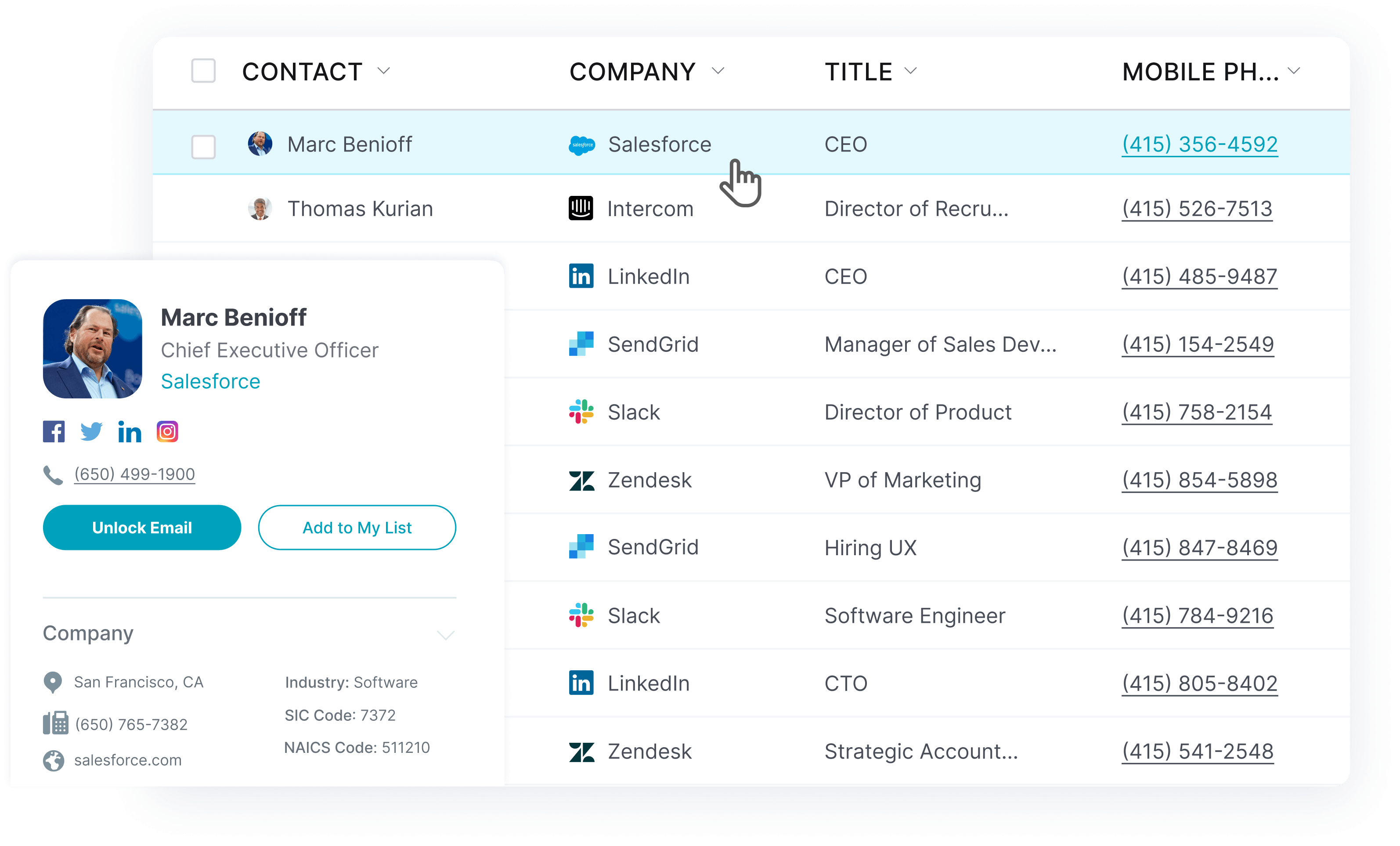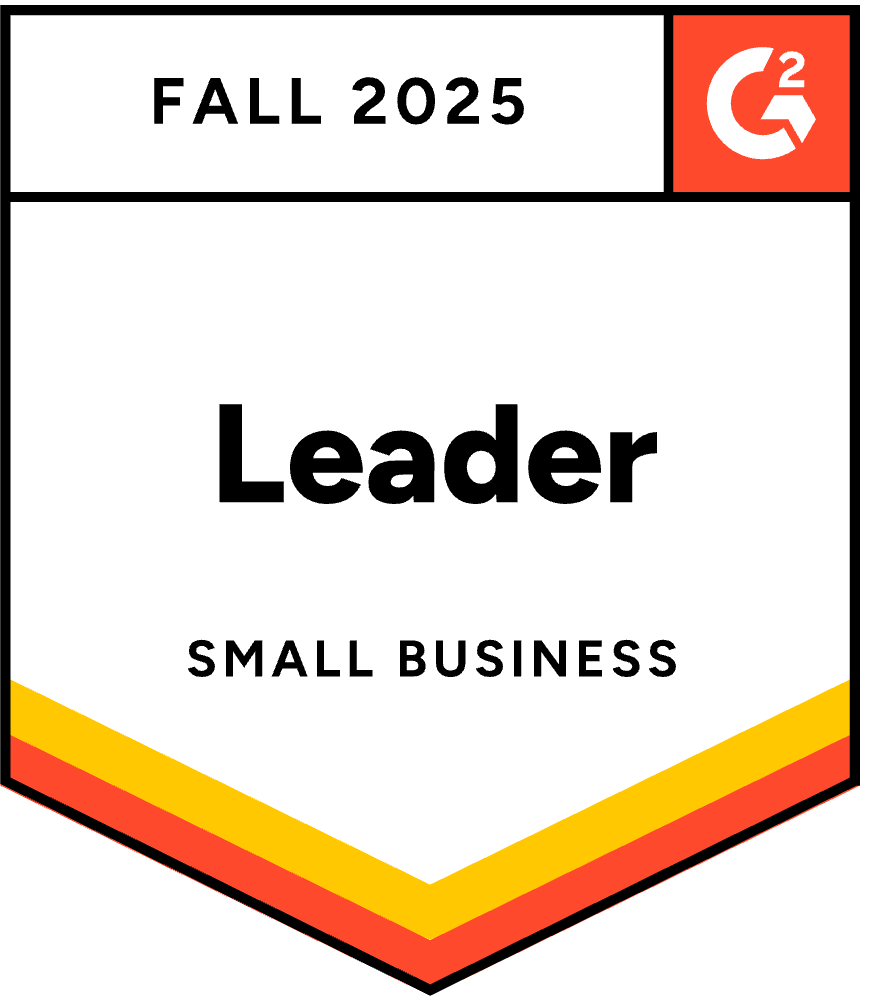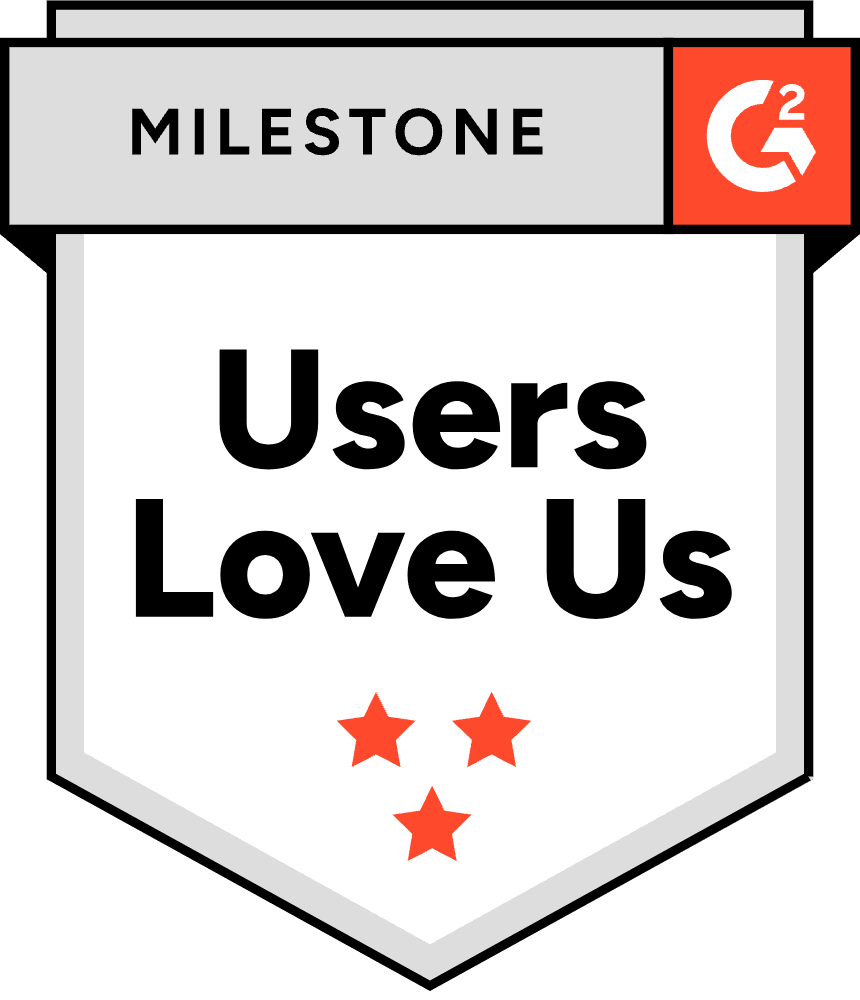In this article, you’ll find everything you need to start writing meeting request emails that get results. We’ll review topics like:
- The must-haves of meeting requests
- Why emails are the best way to request meetings
- The dos and don’ts of meeting requests
- Schedule a meeting email template to get you started
By the end of the article, you’ll not only know how to write an effective meeting request email, but you may also have found the tools you need to write one now!
📌 Reminder: At times, the lack of replies to your cold emails is not because of your copy. Your list matters too. Target only prospects with verified emails. Try UpLead and get 5 free validated B2B emails!
Let’s get started.
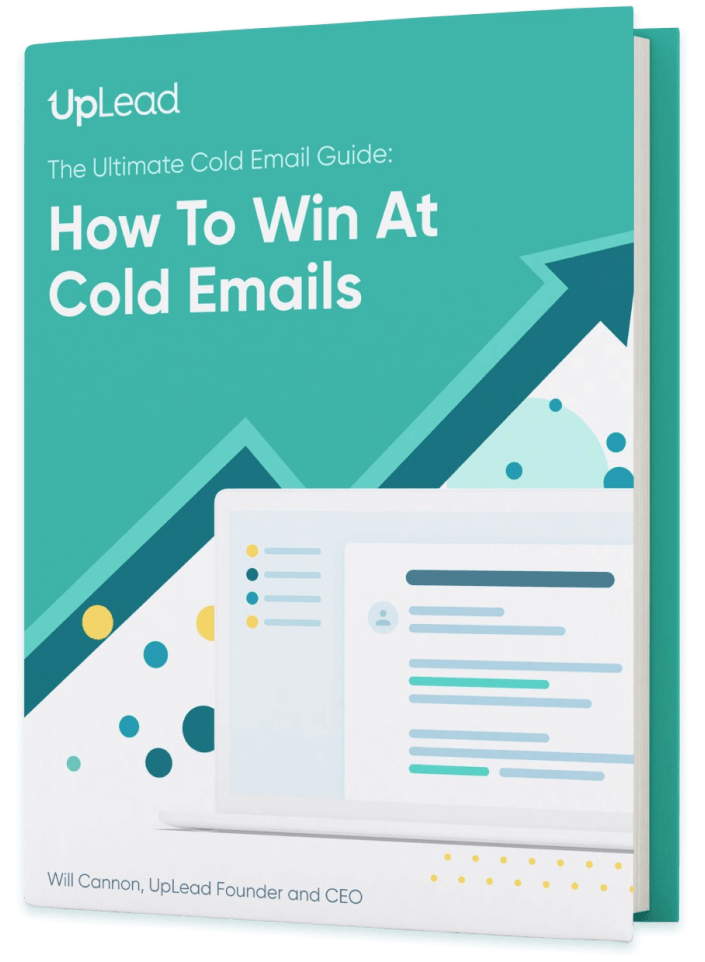
I agree to receive emails from UpLead, and can unsubscribe at any time.
What Is a Meeting Request Email?
A meeting request email is a written message asking for an appointment with someone. It serves as a request for meeting by outlining the key details and purpose effectively.
Unlike appointments, which are usually less structured, meetings are made with a specific purpose in mind, usually to discuss a topic or multiple topics in depth.
Although you can request a meeting in multiple ways, email allows for a very convenient and professional form of communication.
With an appointment request email, you can structure your words the best way possible, avoiding slipups and allowing both you and your recipient to keep track of messages. You can textualize your meeting request by using your past emails as the background.
You can also send a calendar request, which helps you automatically set up a meeting in your online calendars, making the process seamless and effective.
Additionally, you can use a general meeting request template to send multiple personalized requests in very little time.
That’s why emails are the perfect form of communication to set up a meeting, as long as you know how to write them.

Always the right emails for your meeting requests
UpLead provides verified B2B contact data (160+m+ contacts)
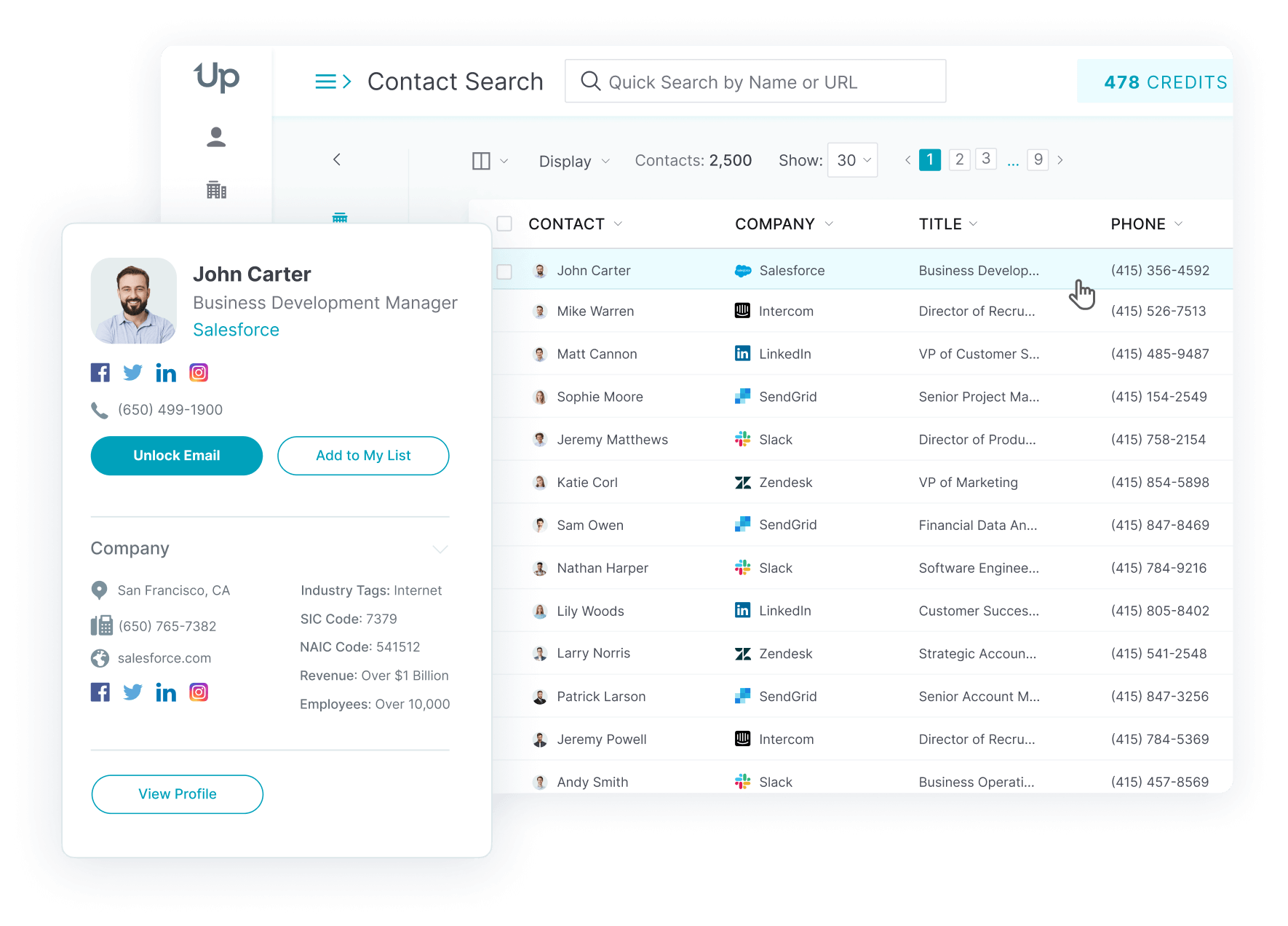
The Ideal Anatomy of Meeting Request Emails
Here’s everything your meeting request emails should include:
(Following a proven meeting request email format can increase clarity and improve response rates.)
1. A professional and irresistible subject line
You need to start with the first thing your recipient will see: compelling subject lines.
Subject lines are always important because they should communicate to the recipient what they’ll receive upon opening your email about scheduling a meeting. This is especially true if you’re sending a cold meeting request email. A subject line may be the difference between the email being opened or deleted without ever being viewed.
Forget all of the “FWD:” intros. Make your subject lines as simple, clear, and promising as you can.
2. Email introduction
Set the tone for the email for a meeting request in the first couple of sentences. If you and your recipient haven’t met, this is the best time to introduce yourself. If you’re writing the email on behalf of someone, you can introduce your company or let the recipient know where you received their information.
Keep it short by only providing information relevant to your recipient.
3. Meeting purpose
Now that your recipient has clicked on your meeting schedule email and knows who you are, tell them why you want to meet them. Convince them by letting them know how you mutually benefit from the meeting. Additionally, include a meeting agenda to outline the key discussion points and objectives.
Let them know the main points you’d like to discuss and how the business meeting could impact them positively. However, don’t let them know all of the details right away. Entice their curiosity by touching on the value you can provide without telling them how. That’s what the meeting is for.
This is the heart of the email. Don’t make it too long. Make it scannable and easy to read, and make sure you polish the content enough so they’d want to meet with you.
4. Availability and location
Once you’ve sold them about why they should meet you, close the deal by inquiring about their availability and discussing a possible location. This approach ensures you craft an effective email to set up a meeting.
Instead of asking them when they’d like to meet, give them a couple of meeting date options to suit a busy schedule or a specific timeframe for them to choose You should also tell them how and where you’ll meet, either in person or online, and provide directions if they need them.
The Best 7+ Meeting Request Email Templates and Samples for Your Outreach Campaigns
Here are more than seven meeting request email samples and meeting email templates to get you started:
1. General cold meeting request email
Setting up a business meeting with someone you haven’t met is tricky. You have a lot of ground to cover in just one email, like who you are, who you work for, what you can provide for them, and why they should meet with you.
You should provide all of this information in as few lines as possible.
This template should help you do the job, and it works for both inside sales and outside sales:
Subject Line: Let’s chat
Dear [name of recipient],
I’m [name], working as [position] at [company name]. Here, we specialize in [activities related to your recipient], and we’ve helped [relevant examples of clients and pain points] obtain [relevant examples of your work].
Since you’re a [position] at [receipient’s company], I believe we could collaborate to achieve [main goal of the meeting].
I’d like to invite you to our office at [address] for a meeting to discuss this further. Would either [two choices of date and time] work for you?
Please let me know if you’d like to meet at a different time, or if the proposed meeting aligns with your schedule.
Kind regards,
[your name]
Make sure you’re personalizing the email with the correct name, and double-check that everything is spelled correctly.
2. Informal meeting request email
If you or your company have an informal way of doing things, or if the targetted recipient may have already known some information about you or your company, you can write a lengthier, more casual meeting request email:
Subject Line: Donuts and coffee on me
Hi [recipient]!
I’m [name], [job title] at [company name]. Let me get right to the point.
I specialize in [activities related to your recipient] and I’m looking for new clients dealing with [pain points] to [value you provide]. In my company, we’ve helped [relevant examples of your clients and pain points] obtain [relevant examples of your work].
I’d like to invite you over to our offices at [address] to talk more about how we can help you achieve [main purpose of the meeting] over some coffee and donuts.
Would either [two choices of date and time] work for you?
Looking forward to meeting with you!
[your name]
Although you have some leeway to add a few extra lines, you need to make sure you’re using them correctly. Use them to provide value and make the best impression instead of giving them too much information.
If you’re worried the recipient will have some questions, don’t be. That’s what the meeting is for!
3. Formal meeting request with someone you already know
If you already know your recipient, there’s no need for introductions:
Subject Line: Requesting to schedule a meeting at your earliest convenience
Dear [Mr./Ms. Last Name],
I hope this email finds you well. I’m writing this email to schedule a meeting concerning [main topic of your meeting]. If it’s convenient, I would suggest meeting at [location, time and place].
Kindly confirm your availability and preference if you’d like to change the time or location.
Kind regards,
[your name]
If this is a sales meeting or you aren’t sure if they’d accept the meeting, you can give them a couple of options for the time or expand on why you’d like to meet.
4. Corporate sales meeting request email
An effective business meeting request email template ensures your email is structured professionally and addresses key decision makers with precise value propositions. If you’re selling to representatives from large companies, you need to keep in mind that they receive these kinds of emails all the time.
Without making the email too long, be sure to spend enough lines explaining why they should make an exception and reply to you.
Subject Line: One minute reading this can save you a month of work
Dear [recipient’s name],
I’m [name], [title] at [company name]. Let me get right to the point.
I’m looking for clients who are leaders in their industry and currently experiencing [main pain points]. At [your company’s name], we’ve helped clients like [notable clients] achieve [value you provide].
Let me know if either [two choices of date and time] work for you. I also want to confirm you’re the right decision-maker in this area at [recipient’s company]
Kind regards,
[your name]
By keeping it short and friendly, you’ll help your recipient read your email in just a few seconds and decide whether or not to schedule a meeting with you.
To help push them toward the right decision, include your best achievements and your most well-known clients. You can find more cold sales templates here.

I agree to receive emails from UpLead, and can unsubscribe at any time.
5. Meeting request email about the main pain point
By using this email, you can receive a great response if you already know about your client’s main pain point and how to solve it:
Subject Line: Let’s talk about [solving main pain point] on Wednesday
Dear [recipient],
I visited your website today for [purpose of visit] when I noticed [pain point].
[Brief description of pain point and how it affects the recipient].
As a [job title] at [company], I’ve fixed this exact issue for [example of customer]. Fixing this issue usually ends up in [results].
I would like to have a quick chat about it next week at [desired location]. Would either [two choices of date and time] work for you?
Kind regards,
[your name]
Keep it casual so it truly sounds like you can help instead of coming off as trying to sell them something they may not need.
6. Meeting request email highlighting your credentials
If your reputation speaks for itself, let it be your main selling point with this sample email:
Subject Line: Thank you for scheduling a meeting with our CEO
Dear [recipient’s name]
I’m [your name] working for [your company] as [job title]. Here, we specialize in [activities related to your recipient]. Our client base includes [your most notable clients] who trust us to [solve main pain point].
While some other companies do [general examples], we like to [main selling point]. That’s why I think we could [focus on their main pain point], and provide the results to show for it fairly quickly.
I would love to discuss this further next week at [desired location]. Would either [two choices of date and time] be a good time for you?
Kind regards,
[your name]
To avoid coming off as a showoff, list only companies your recipient is most likely to have heard of and those with the most relevant pain points.
7. Meeting email request email for SaaS companies
Since online meetings are faster and less intrusive, you may have more luck scheduling a virtual meeting than in person in the fast world of SaaS companies. Update your language to a more casual tone, and forget all the lingo.
Here’s how to do it:
Subject Line: Save the date 08/11/21
Dear [recipient’s first name],
I’ve been following your company for a while, and I’m loving what you’re doing in [recipient’s industry].
Like you, my company is also achieving great things in [your company’s industry]. We’ve helped [similar companies to your recipient’s] with [pain points and results].
I would love to talk more about how we can do the same for you and your company with a quick meeting online!
Would either [two choices of date and time] work for you?
Kind regards,
[your name]
If you can, mention actual achievements of your recipient’s company to personalize it further and increase your chances of receiving a response.
BONUS: Asking questions to increase the chance of a conversion
The best way to get to know someone is by asking questions. This is especially true when you’re targeting a highly valuable asset since questions can help you get to know them better and show off your knowledge.
Here’s how:
Subject Line: Free workshop on [solving main pain point]. Are you available tomorrow?
Dear [first name],
Do you use [product or service] at your company? Don’t you wish you could also [solve main pain point] with it?
I’m [name], and at [your company], we thought the same thing. That’s why we developed [your main solution].
Do you have [list two or three pain points]? Our [solution] can help you with that and more. How would you like to try it for free?
I’d like to meet with you to schedule a meeting and give you a workshop on how [your solution works] and how it can help you with [main pain points]. I would like to talk more about it next week at [desired location]. Would either [two choices of date and time] work for you?
Kind regards,
[your name]
By asking questions, you’re not only showing you’ve done your research, but you’re also letting your recipient imagine the answers.
Bonus: Examples of Email Subject Lines for Meeting Request
Are you looking to get the best cold email subject lines that work? Here are a few subject lines you can use to entice your recipient to open your email. (Consider also using personalized subject lines to tailor your message and increase engagement.)
Best for scheduling a meeting immediately:
- Let’s catch [location]’s happy hour [date and time]
- Let’s talk about [solving main pain point] on Wednesday
- Save the date 08/11/21
- Hoping to meet you on Friday at 4 pm…
Best for catching your recipient’s attention:
- Donuts and coffee on me
- Free workshop on [solving main pain point]. Are you available tomorrow?
- Awaiting your response
- One minute reading this can save you a month of work
Best for formal meetings:
- Hello [name of recipient]. Meeting request in your inbox
- Requesting a meeting at your earliest convenience
- You are invited to meet us tomorrow for lunch
Best for quick responses:
- Can we schedule a meeting tomorrow at 3 pm?
- Are you free today?
- Urgently requesting a meeting (this urgent meeting request signals time-sensitive matters)
How to Ask for a Meeting by Email: Best Practices
Here are a few of the things you must always remember to do whenever you’re scheduling a meeting via email:
Triple-check your recipient’s name
Making any misspellings on your meeting request will likely get a hard pass from them. It shows your lack of care and lack of attention to detail. After all, why would they meet you if you don’t even know who they are?
Check that you’re addressing your email to the right name, and make sure the name is spelled correctly.
Keep it short and sweet
Remember: this email is all about getting the meeting. Ensure there is a clear call prompting the recipient to confirm their availability. Give your recipient enough information to agree to the meeting, and don’t spend too much time trying to sell them on giving you one.
If your email looks like a text block, your recipient may just delete it without reading it. Keep it short in length, and use short sentences to help your recipient read faster.
Personalize your email
Never begin your email with “to whom it may concern” or something similar. Instead, show how much you care about them by addressing them by name and personalizing your email to address their main pain points.
If they think that you took the time to look them up and write to them, they may choose to do the same by replying.
Follow up
Don’t desist if you don’t get a response. wait for a few days, and if it’s clear they aren’t planning on responding, follow up with another email or even a cold call (here are our best cold calling scripts).
Following up ensures you’ll reach your recipients and schedule a meeting with as many potential leads as possible.
FAQ
What is an email to request a meeting?
An email to request a meeting clearly outlines the purpose, availability, and benefits of a proposed discussion, ensuring both parties understand the objective.
How do you craft an email requesting a meeting?
An email requesting a meeting must include a compelling subject line, a brief introduction, clear availability, and a concise explanation of mutual benefits.
How do you write a business meeting request email?
A business meeting request email clearly outlines objectives, includes realistic scheduling options, and highlights mutual benefits to engage high-level decision makers.
How do you craft a meeting invitation?
A meeting invitation provides all essential details—agenda, date, location, and purpose—ensuring that invitees are well informed and prepared.
How do sales reps benefit from structured meeting emails?
Sales reps experience improved conversion rates when using well-organized meeting emails, as they clearly communicate value and next steps.
When should you use “best regards” in a meeting request email?
“Best regards” is an ideal sign-off for formal communications, lending both warmth and professionalism to your closing.
How to write a meeting request email effectively?
Focus on clarity, brevity, and relevance. How to write a meeting request email involves crafting a compelling subject, a succinct introduction, clear options, and a respectful closing.
What is a meeting proposal?
A meeting proposal outlines the purpose, agenda, and expected outcomes of a meeting, serving as a formal suggestion to convene and discuss key topics.
How do you request a meeting with your boss professionally?
When you request a meeting with your boss, ensure that your message is concise, respectful, and includes a clear agenda to facilitate quick approval.
How do you compose a professional email requesting a meeting?
Craft a professional email requesting a meeting by combining succinct information, clear scheduling options, and formal language throughout your message.
What is an example of how to ask for availability for a meeting?
A practical example would be to list two or three time slots and politely inquire if any suit their schedule.
How to ask for a meeting in an email effectively?
Asking for a meeting in an email requires a straightforward approach that includes your purpose, a few proposed time slots, and an invitation for confirmation.
Write meeting request emails that get results
Writing letters is an art form. This hasn’t changed just because we now send them electronically.
If you want to write effective meeting request emails that yield a positive response, make sure you’re cutting the time you spend elsewhere, like finding leads or getting the right information about them. Doing that is easy, as long as you have the right lead gen tools.
When you know exactly who your prospects are, you don’t have to be salesy or pushy. If you have products that add value to their lives, they will naturally be drawn to you. It all starts with targeting the right accounts.
With UpLead, you can hyper-target prospects by narrowing the search down to their industry, role, company size, buying needs using intent data, and 50+ other filters. You’ll also get their emails and all the info you need to personalize your meeting requests.
Try UpLead for free today and get prospecting data on 5 leads today.
Lead generation doesn’t have to be all that painful. With UpLead, you can easily connect with high-quality prospects and leads to grow your company.
